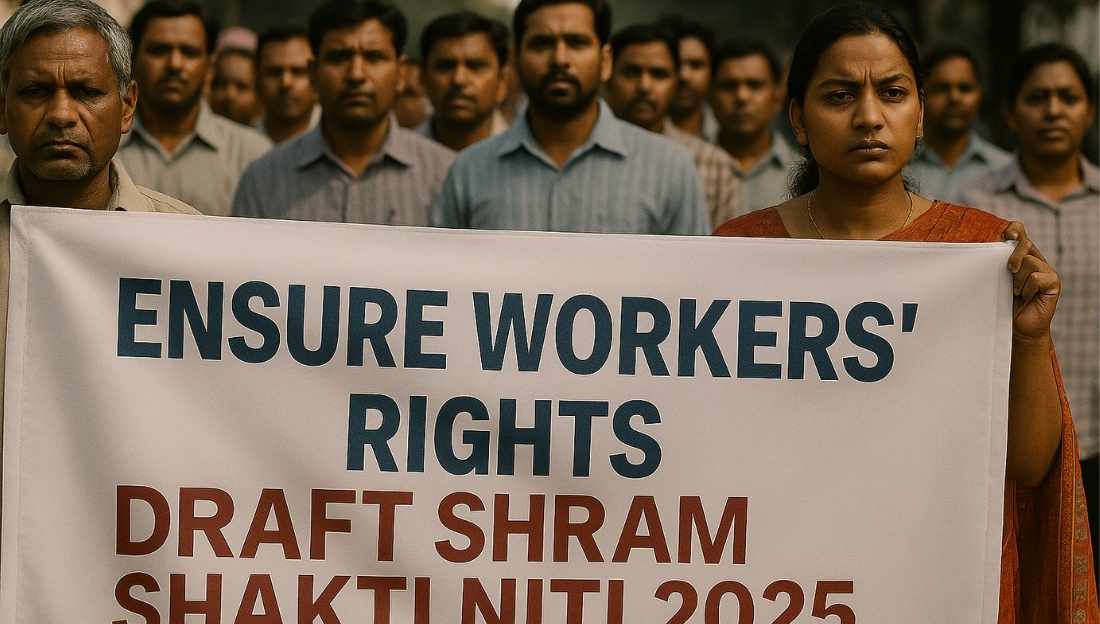The Government of India recently released the draft Shram Shakti Niti 2025, the first attempt to create a unified labour and employment policy for the country.
Significance of the Draft Policy
- This is India’s first comprehensive labour and employment policy, a major step after the consolidation of 29 labour laws into four labour codes.
- It presents itself as a “rights-based, future-oriented” framework aligned with the India@2047 vision.
- The draft blends digital tools, flexible labour regimes, and cultural references drawn from ancient Indian texts, which many view as outdated for a modern labour policy.
- Its release accompanies rising reports of modern slavery-like conditions in multiple sectors, highlighting a troubling gap between policy claims and worker realities.

Does the Draft Strengthen Workers or Employers?
- Informal conditions dominate construction, textile, seafood and quarrying sectors, where workers lack contracts, safety cover, ESI and PF.
- The policy’s strong tilt toward employer flexibility and ease of doing business risks institutionalising precarious work.
- Critics argue that it sidelines the spirit of Articles 14, 16 and 21 by weakening equality, opportunity, and dignity guarantees.
- The policy does not reflect commitments under ILO conventions on workplace safety, gender equity, and maternity protection.
Limits of the Draft’s Digital-Centric Approach
- Heavy reliance on AI-powered skilling and employment matching platforms, including the NCS and Skill India tools.
- But only 38% of Indians possess adequate digital literacy, leaving most informal workers—especially women—outside the system.
- The eSHRAM portal, despite massive enrolment, has seen uneven benefits and weak financial support.
- Technology-based hiring may deepen existing caste, class, and gender biases, with little oversight on algorithmic discrimination.
Concerns with Constitutional and Global Norms
- The draft does not adequately strengthen collective bargaining or the functioning of tripartite bodies.
- Dilution of inspectorates under self-certification shrinks accountability for workplace safety.
- The plan to raise women’s labour force participation to 35% by 2047 lacks clarity on infrastructure, safety, mobility, and wage parity.
Way Forward
- Introduce a universal social protection floor covering informal and gig workers under ESI and EPFO.
- Revive labour inspectorates with independent audits for safety and wage compliance.
- Use gender budgeting to monitor women’s participation and workplace equity.
- Build digital systems with data security, algorithmic fairness, and low-literacy accessibility.
- Anchor reforms in constitutional morality rather than cultural symbolism.
Conclusion
The draft Shram Shakti Niti 2025 has an ambitious vision, but its emphasis on flexibility and digital solutions risks bypassing India’s most vulnerable workers. For real transformation, labour policy must prioritise enforceable rights, stronger institutions, and dignity for every worker.
This topic is available in detail on our main website.





